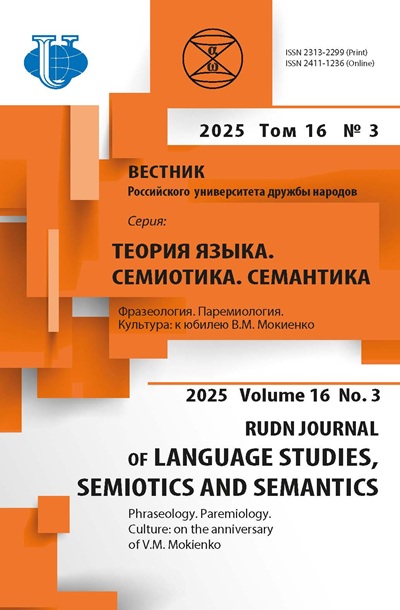Выпуск
Название
Авторы
|
Ратникова А.Г., Богуславская В.В. |
|
Добровольский Д.О. |
|
Аль-Фоади Р.А., Зарытовская В.Н. |
|
Новоспасская Н.В., Раадранириана А.М., Лазарева О.В. |
|
Туманова А.Б. |
|
Андреева М.И., Солнышкина М.И., Сарра С. |
|
Недопекина Е.М. |
|
Хухуни Г.Т., Будман Ю.Д. |
|
Гуревич Д.Л. |
|
Монфорте Дюпре Р.В., Чеснокова О.С. |
|
Сулейменова Э.Д., Аканова Д., Аймагамбетова М.М. |
|
Раадранириана Антса Миангола Малала -. |
|
Терещук А.А. |
|
Чулкина Н.Л., Филиппович Ю.Н., Александрова О.И., Новоспасская Н.В., Речинский В.А. |
|
Паизбекова А.Д. |
|
Перфильева Н.В., Ху П. |
|
Дугалич Н.М. |
|
Иванова М.В. |
|
Герасименко И.А., Кудря О.А. |
|
Перфильева Н.В. |
|
Новоспасская Н.В., Ян С., Михайленко А.Ю. |
|
Бондарева В.В. |
|
Матыцина И.В. |
|
Дугалич Н.М., Гишкаева Л.Н. |
|
Ху Пэйпэй -. |
|
Кудря О.А. |
|
Казаченко О.В. |
|
Максудов У.О., Хамидова Н.Ш., Аминджонова Р.Х., Шарипова М.А. |
|
Оглезнева Е.А., Пустовалов О.В. |
|
Алонцева Н.В., Ермошин Ю.А. |
|
Дугалич Н.М. |
|
Перфильева Н.В., Да Сильва Ф. |
|
Иванова И.Г., Егошина Р.А. |
|
Кургузенкова Ж.В., Кривошлыкова Л.В. |
|
Какзанова Е.М. |
|
Оганова Е.А., Алексеева О.А. |
|
Уфимцева Н.В. |
|
Моради Марьям Дарьюш -. |
|
Ли Чуньжун -. |
|
Миньяр-Белоручева А.П., Сергиенко П.И., Нелюбова Н.Ю. |
|
Юйхань -., Лазарева О.В., Баров С.А., Веред В.Т. |
|
Селиверстова Е.И., Волкова Л.Б., Ма С. |
|
Кузембаева Г.А., Майгельдиева Ж.М., Майдангалиева Ж.А. |
|
Джусупов М. |
|
Дугалич Н.М. |
|
Нагзибекова М.Б., Хасанова Ш.Р. |
|
Чинина Д.С. |
|
Лутеро Т. |
|
Прошина З.Г. |
|
Николич М., Новоспасская Н.В. |
|
Жикулина К.П., Перфильева Н.В., Ли М. |
|
Недопекина Е.М., Ха Ц. |
|
Цзинь Л., Лазарева О.В., Лазарева О.С. |
|
Новиков А.Л., Новикова И.А. |
|
Аль-Фоади Р.А., Зарытовская В.Н., Аль-Рознамачи Р.Х. |
|
Москвичева С.А., Ли С. |
|
Ли С. |
|
Медведева Д.И., Фаттахова А.Ж. |
|
Али Мадаени Аввал -., Мариям Моради -. |
|
Мехраби Кесарь -. |
|
Кривошлыкова Л.В., Кургузенкова Ж.В. |
|
Новиков Ф.Н. |
|
Перфильева Н.В., Галанкина И.И. |
|
Алонцева Н.В., Ермошин Ю.А. |
|
Фитьян Рима -., Аскутия Майте -. |
|
Зарытовская В.Н. |
|
Иконникова О.Н., Кужарова И.В. |
|
Чжан Л., Кормазина О.П. |
|
Чичина М.О. |
|
Параккини Л., Трофимова Г.Н. |
|
Сунь Ю., Рыбаков М.А., Лысякова М.В. |
|
Хосейни А.А., Кахнамуи Т.Х. |
|
Чигашева М.А. |
|
Баров С.А., Егорова М.А. |
|
Паско А. |
|
Мамедова К. |
|
Котеняткина И.Б. |
|
Зарытовская В.Н. |
|
Найдёнова Н.С. |
|
Муминова А.А. |
|
Омельченко В.В. |
|
Демьянков В.З. |
|
Стрельчук Е.Н., Лепкова А.С. |
|
Жолудева Л.И. |
|
Иванов Е.Е., Ломакина О.В., Петрушевская Ю.А. |
|
Варзин А.В. |
|
Денисенко В.Н., Калинина Н.С. |
|
Алонцева Н.В., Ермошин Ю.А. |
|
Кобылко Я. |
|
Чеснокова О.С., Джишкариани Л.М. |
|
Чигашева М.А. |
|
Джиоева А.А. |
|
Хухуни Г.Т., Осипова А.А. |
|
Джайавардена Х.С. |
|
Владимирова Т.Е. |
|
Найденова Н.С. |
|
Эбзеева Ю.Н., Дугалич Н.М. |
|
Сафаралиева Л.А., Перфильева Н.В. |
|
Галанкина И.И., Перфильева Н.В., Цибизова О.В. |
|
Бесолова Е.Б., Закаева Б.К., Джиоева В.П., Денисенко А.В., Калинина Ю.М. |









